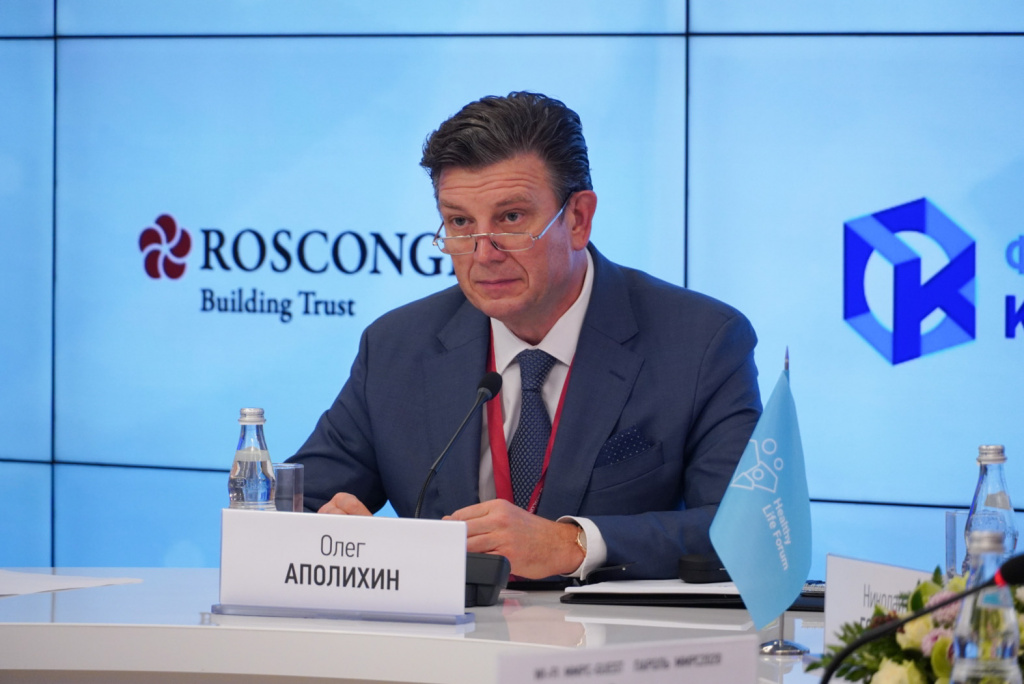
Russian Demographics: Impact Factors
The expert discussion ‘Russian Demographics: Impact Factors’ will be held as part of the St. Petersburg International Economic Forum’s business programme. The session is part of the ‘Delivering on National Development Targets’ track and is divided into two thematic sections. The expert discussions will be moderated by Oleg Apolikhin, Director of the Lopatkin Scientific Research Institute of Urology and Interventional Radiology – a branch of the National Medical Research Radiological Centre under the Russian Ministry of Health.
“To solve the demographic issue, a key task is to create a preventive system to preserve the reproductive health of the family. It is also essential to develop and implement programmes to motivate the population to maintain a healthy lifestyle and to have a responsible attitude towards their health and parenting. Part of our expert discussion on the sidelines of the St. Petersburg International Economic Forum will take place in the Governors’ Club space. The country’s regions will present their best practices, which should be scaled up at the national level,” Apolikhin said.
The expert discussions will be attended by Plenipotentiary Representative of the Russian President in the Central Federal District Igor Shchyogolev, Director of Human Capital at the Centre for Strategic Research Foundation and Vice Rector of the National Research University Higher School of Economics Lilia Ovcharova, Director of the Federal Research Institute for Health Organization and Informatics of the Russian Ministry of Health Olga Kobyakova, Institute of Scientific and Public Expertise General Director Sergey Rybalchenko, Russian State Social University Rector Natalya Pochinok, as well as the governors of several Russian regions.
The first thematic section of the expert discussion is ‘The Socioeconomic Challenge of Preserving the Able-Bodied Population’. The death rate in Russia among the able-bodied population is currently 24%, and men account for 80% of this statistic. This means that the country’s economy is losing a huge resource. Russia ranks first in the world in terms of this indicator. The main causes of mortality in men aged 40–65 are socially significant diseases such as diseases of the cardiovascular system and oncology. However, medical care is not solely responsible for solving the problem of reducing premature mortality. It is crucial to create preventive infrastructure that aims to prevent morbidity and an information agenda that promotes the values of a healthy lifestyle.
The meeting participants will discuss what factors are influencing the high rates of premature mortality and how to manage them, how to reverse the trend of people dying at a younger age from socially significant diseases that are primary causes of death, how to shift the emphasis in the healthcare system towards prevention and the early diagnosis of diseases that cause high mortality rates among young people and in early adulthood, as well as what public policy measures should motivate society to lead a healthy lifestyle and take proper care of their health as an effective measure to curb the spread of serious life-threatening diseases.
Participants of the second thematic section ‘Increasing the Birth Rate in Russia: Solutions and Prospects’ will discuss what socioeconomic aspects can help motivate procreation, what new models of healthcare should support reproductive health and the health of mothers and children, how to defeat the ‘male infertility pandemic’, what state policy measures are needed to create a preventive system to support a family’s reproductive health, and what socioeconomic measures to support parents and children can spur Russia’s demographic development, among other issues.
In his address to the Federal Assembly, Russian President Vladimir Putin said the country’s top priority should be to take care of the Russian people. The government’s policy to improve the demographic situation in the country should focus on increasing the birth rate. Key aspects of this goal include programmes to strengthen social guarantees and protect mothers and children by adopting measures to provide social and direct financial support to young mothers and families with children. These strategies are predicated on a wide range of goals to prevent risks associated with reproductive disorders, create a health-friendly environment, and raise awareness to promote a healthy lifestyle and responsible parenting. Despite the challenges to the government’s demographic policy caused by the COVID-19 pandemic, the strategic goal remains the same: to once again ensure sustainable population growth and achieve average life expectancy of 78 years in Russia by 2030.








